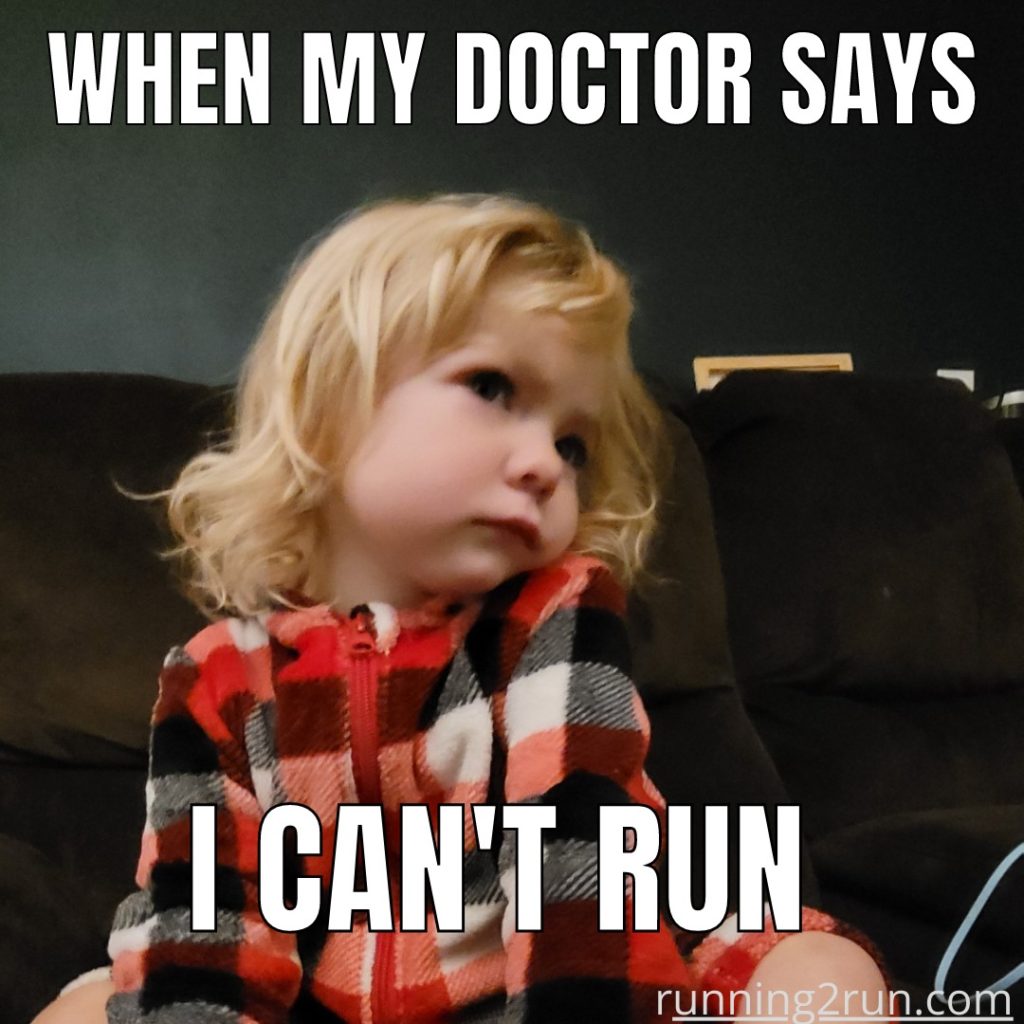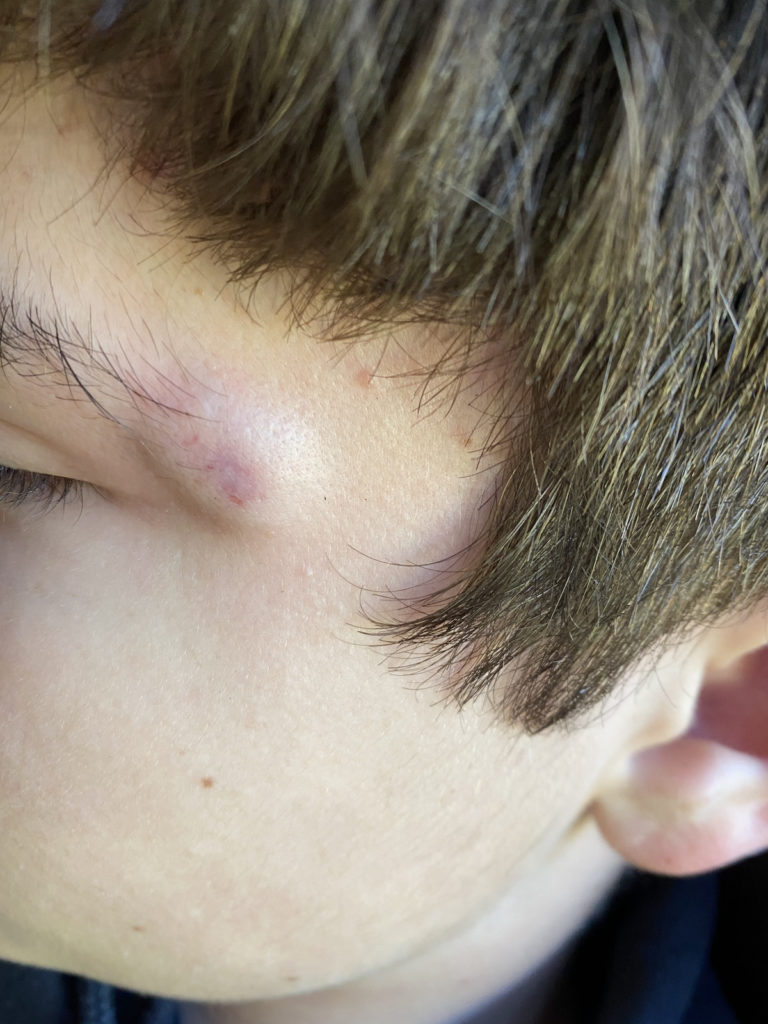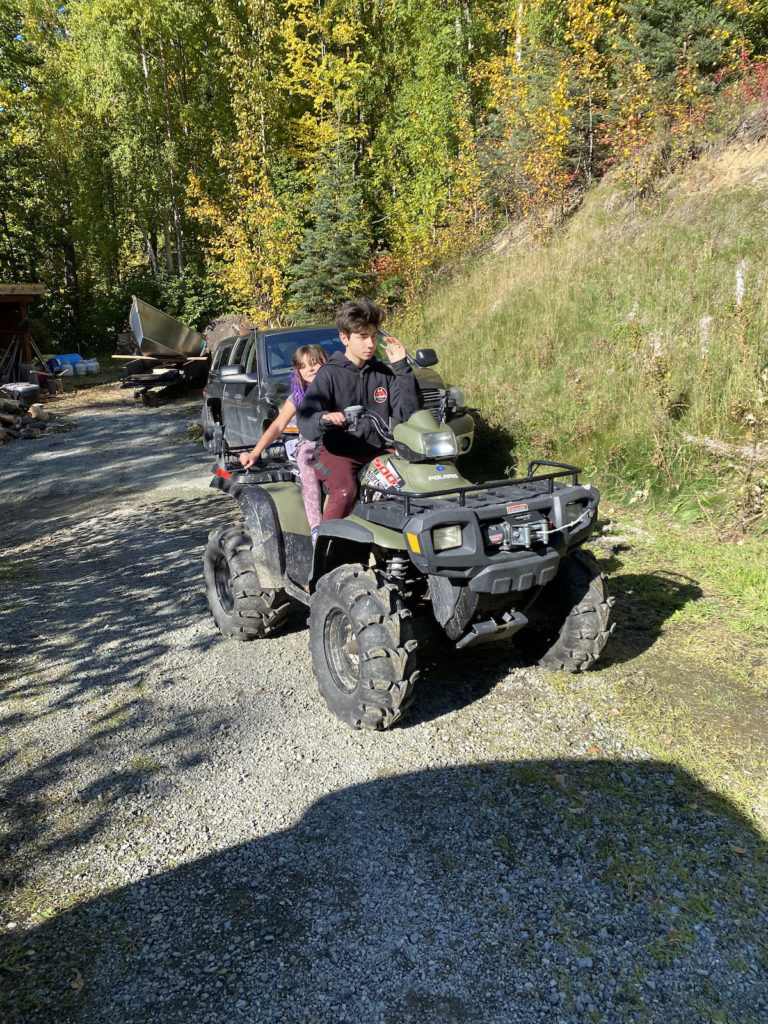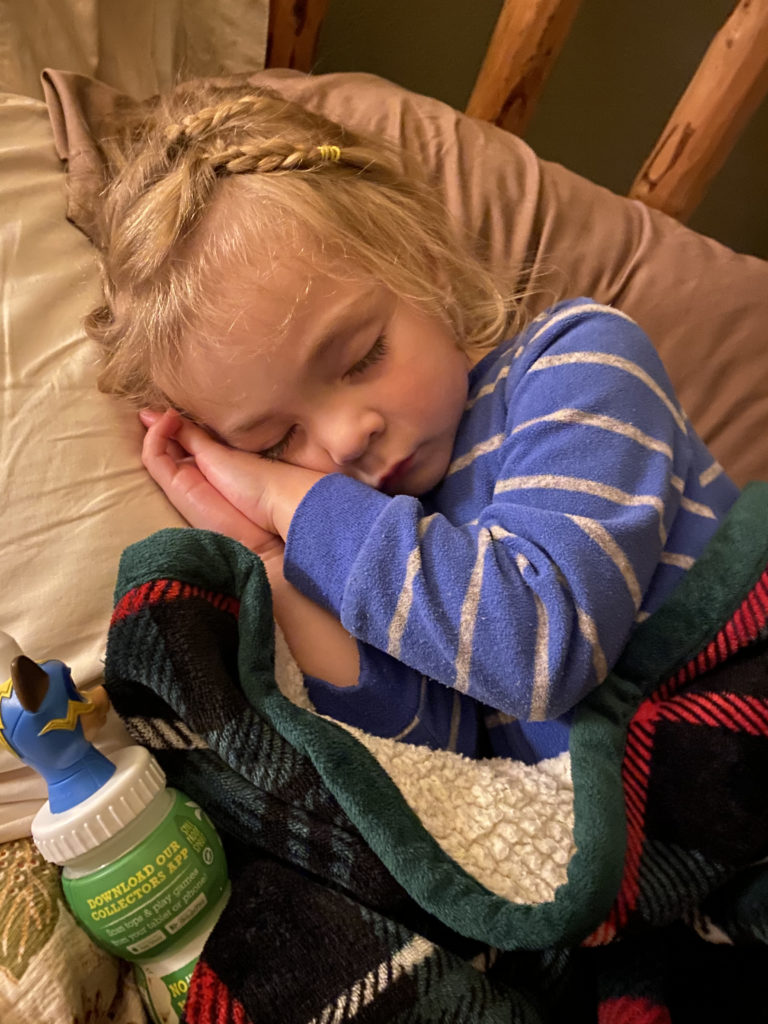In my last post,I alluded to the fact that runners can continue to run even with knee osteoarthritis. Like most people, I use to think that knee OA was a wear and tear type of problem. Once I received that diagnosis, I was assured my running days were over. It was just a matter of time before a knee replacement was warranted, right? Even my orthopedic doctor suggested that I take up swimming. Although, he did give a little hope that I could continue to run as long as I wore well cushioned shoes (more on this in a future post) and took Aleve daily. I am not a fan of swimming or taking daily medications. Because I have a family history of knee OA, he said I could just blame this problem on my parents. Sounds like I am doomed.

But, I just refused to believe that I was not ever going to be able to run, so I did some research of my own.
The idea that running causes wear and tear knee osteoarthritis has been debated and debunked over the years. Now, most health care providers are in agreement that this is not the case. But, what they may not be in agreement with is new research which indicates that running with existing knee OA does not cause the symptoms to become worse. According to this study, some of the runners had less pain and their X-rays did not show increased structural damage compared to the non-runners. This is great news to me because it does give me a little hope that I may be able to return to running. There are very few studies that I could find on this issue, so like they always say, more studies need to be done.
So, if running isn’t the cause, then what is? Apparently, the articular cartilage that lines the knee joint can become damaged over the years. The damage can be mild to completely eroded away. Arthritic pain can happen due to roughened edges of the damaged cartilage that irritate the surrounding tissues and leads to inflammation. When the cartilage is completely eroded away, the nerve endings in the unprotected bone can also lead to arthritic pain. Some of the causes of damage to the cartilage that leads to osteoarthritis include:
- Joint instability
- Previous injuries
- Malalignment of the knee
- Genetics
- Gender (occurs mostly in females)
- Age (more common in older populations)
- Overweight
Given the genetic and gender factors, there may not be a lot of hope for me. My mother had bilateral partial knee replacements. She expeirenced such severe pain that she could barely get through her shift while working as a nurse. The surgery went well; she didn’t have any knee problems after the surgery and was so glad that she had it done. However, I have an older brother as I mentioned in my last post, who runs most every day with no knee problems. I have mild degenerative knee OA that could potentially get worse I guess given my family history and the fact that I am female. But, I am stubborn (I know some may be surprised that I am even admitting to this ha ha) and I am not giving up quite yet.
My orthopedic Dr. explained that my arthritis along with the pain will only progress over time. However, physiotherapist Brodie Sharpe states that there isn’t a real correlation between what is being seen on X-ray and how much pain runners are experiencing. According to him, some runners can have pretty bad X-ray images, but have minimal to no pain. Alternatively, other runners with mild degenerative arthritis can experience intense pain. My chiropractor once told me about a patient whose X-ray indicated he had severe arthritis, yet he was running every day. He was even unsure if he should share that information with the patient because of the misconceptions that can occur when given that diagnosis.
Sharpe states that “cartilage is living breathing tissue that breaks down and builds up” but that information is contrary to popular belief. Many physicians believe that cartilage can not regenerate because it doesn’t have blood vessels. But, Sharpe argues that loading the joints by running actually triggers cartilage growth (source).
Dr. Kuhn , of Keep The Adventures Alive, says that we associate pain with more damage and so we tend to take time off to let the body heal. By taking time off, the body can get weaker and when we try to go back to running, we may experience more pain. Sharpe adds that runners may expect to have mild pain while running, but that doesn’t mean they can’t run. The pain just needs to be monitored and if it becomes worse with running, then they may need to back off, but not necessarily stop running altogether. He correlates the pain to more of an inflammation problem than a structural one because many OA sufferers have good (less pain) days than others. He uses the example that if you take an anti-inflammatory, the pain decreases. His point is that taking the anti-inflammatory didn’t change the bone structure just like having good and bad days; the structure of the bone isn’t changing from day to day. His video is about an hour long and it is really worth listening to. He goes more into the different types of inflammation of the knee and the impact that has on pain. He also talks about perceptions and misconceptions once you have the diagnosis which is really interesting. I don’t want to dive deep into all of that here in my little blog, but it is great info and worth listening to if you are interested.
Research is amazing and does tend, at times, to debunk a lot of myths. I am looking forward to more research with even more data to prove that runners can continue to run with knee OA. However, even with limited information on the advances of this topic, I am still giving running another try. According to the research that Sharpe does talk about, it can’t hurt. I also believe that strengthening exercises to support the knee is just as important. I will go into more of the type of exercises in the next blog post.
For now, I have started a run/walk program where I run for 60 seconds followed by a 90 second walk x 8 or for about 20 minutes. I do a 10 minute warm-up walk prior to running and also a 5-10 minute cool down walk. I usually ice my knees after the run and sometimes apply heat prior to running. I am working on strengthening exercises and stretches as well. I hope that this new data holds true for me and that I can continue to run.
Disclaimer: This information is my interpretation of the data that I have researched. It should not be used for self-treatment in any way. You should always consult your health professional for expert advice. Everybody is different and responds differently to the various treatments.
And now for some family news and fun stuff.
My sweet Tylor just about took his eye out while helping with some outside chores. I was so scared for him!!

I may have gone just a bit overboard on the ice…

But in no time he was back outside having fun taking Maddy on 4-wheeler rides

Maddy showing off her creative art…

And Charlie being her sweet little self….

Fall seemed to come early this year??

And I drove into work in pretty much a slushy whiteout but it got better as the day went on….

And the sunsets have been spectacular

This loss has been so hard and for some reason this past week has been particularly difficult. I just miss her so much and would give anything to see her again. Life is so hard without her.

Leave a Reply